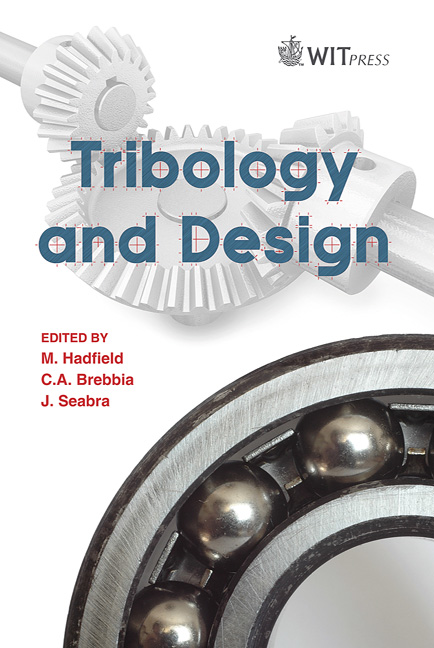Gear Micropitting: Model And Validation
Price
Free (open access)
Transaction
Volume
66
Pages
12
Page Range
25 - 36
Published
2010
Size
322 kb
Paper DOI
10.2495/TD100031
Copyright
WIT Press
Author(s)
J. A. Brand˜ao, J. H.O. Seabra & M. J. D. Castro
Abstract
A numerical model for the prediction of surface initiated damage on gear tooth flanks (micropitting and mild wear) is presented. This model hinges on a model of the mixed film lubrication regime and on the application of the Dang Van highcycle multi-axial fatigue criterion. The numerical model developed was applied to the prediction of micropitting and mass loss of gear teeth in an actual micropitting test. Keywords: gears, surface fatigue, micropitting, numerical model, wear. 1 Introduction Micropitting is best described as the appearance of minuscule cavities on the surface of a gear tooth, most often near and bellow the pitch line. They are thought to be caused by the propagation of micro-cracks originating from the tooth surface and swiftly reemerging so as to form a pit with a typical depth of 10 μm [1, 2]. Widespread micropitting severely increases the noise level of a gear box, and in some instances may sufficiently weaken the tooth subsurface for a whole layer to be removed at once, introducing a shape defect. Because of the small size of the pits, the crack propagation time is correspondingly small and the fatigue life is dominated by the initiation time. Additionally, the fact that the phenomenon remains circumscribed within the first few tens of micrometres below the tooth surface renders it extremely sensitive to the contact
Keywords
gears, surface fatigue, micropitting, numerical model, wear





